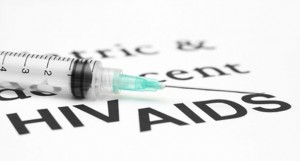
Health Assistant Secretary Paulyn Ubial said the rise in HIV cases was “alarming” at 20 percent every year, while neighboring countries were turning the tide.
“It is very alarming because all the countries in Southeast Asia are actually reversing the trend… they have fewer cases. It’s only the Philippines that has an increasing number of cases,” Ubial told reporters.
At a press conference on Wednesday, health officials said the DOH expected a 10- to 20-percent spike in HIV cases on top of the current trend. It urged people at risk of contracting the deadly HIV infection to avail of the free testing offered by the government.
DOH spokesman Dr. Lyndon Lee Suy announced that the department was scheduling for the first time National HIV Testing Week from May 11 to 15 as a prelude to the observance of an AIDS Candlelight Memorial on May 17.
The weeklong activity aims to push more people at risk—males having sex with males and injecting drug users—to get tested so they would know their status and could benefit from the free antiretroviral therapy offered in 19 treatment hubs across the country, said Lee Suy.
Will gradually decline
“So we are expecting the numbers to increase one time, big time, but eventually we hope the number of cases will gradually decline,” Ubial said.
She said next week’s activity would also provide the DOH with a more realistic database on the prevalence of HIV in the Philippines.
From January to February this year, the DOH recorded 1,182 new cases of HIV-AIDS. In February alone, 646 new cases were reported, the highest number reported in a month “in the history of HIV in the country,” according to the DOH.
It attributed the continuing rise of HIV cases in the county to the low testing rate among key populations. The 2013 National Demographic Health Survey showed that only two percent of women aged 15 to 49 had been tested for HIV and knew the results.